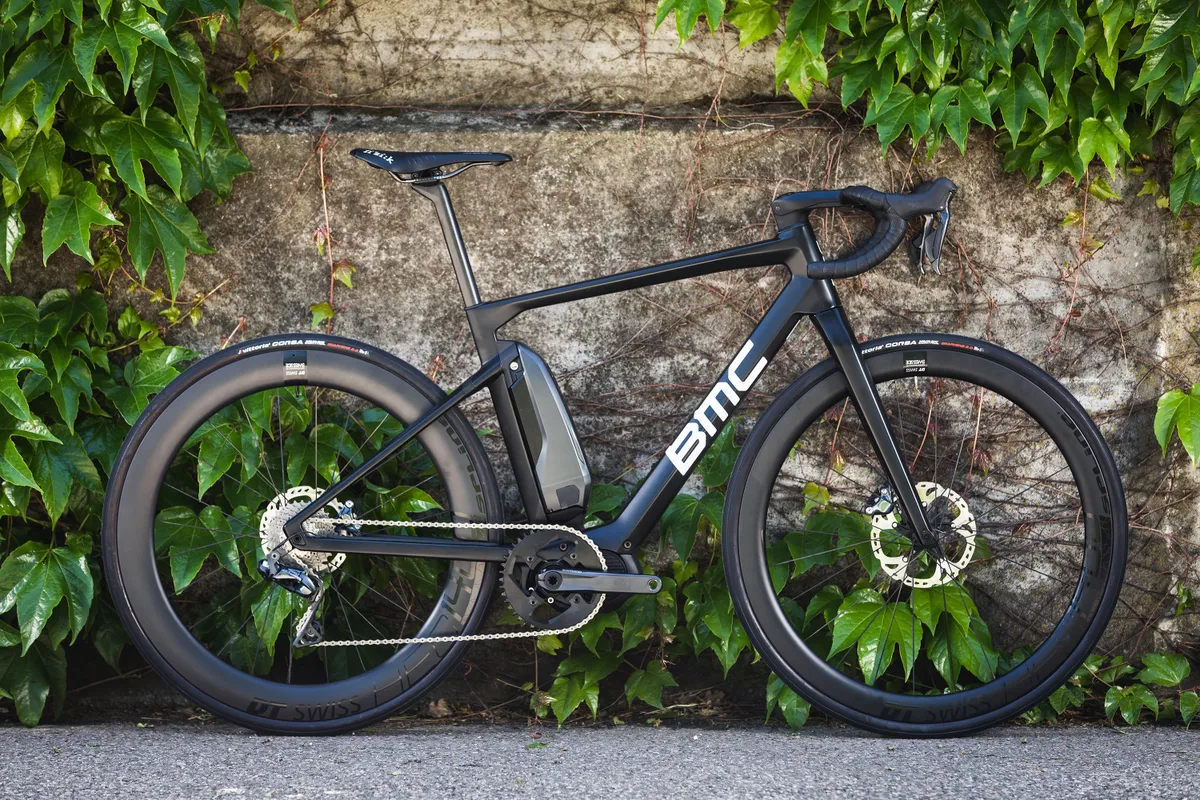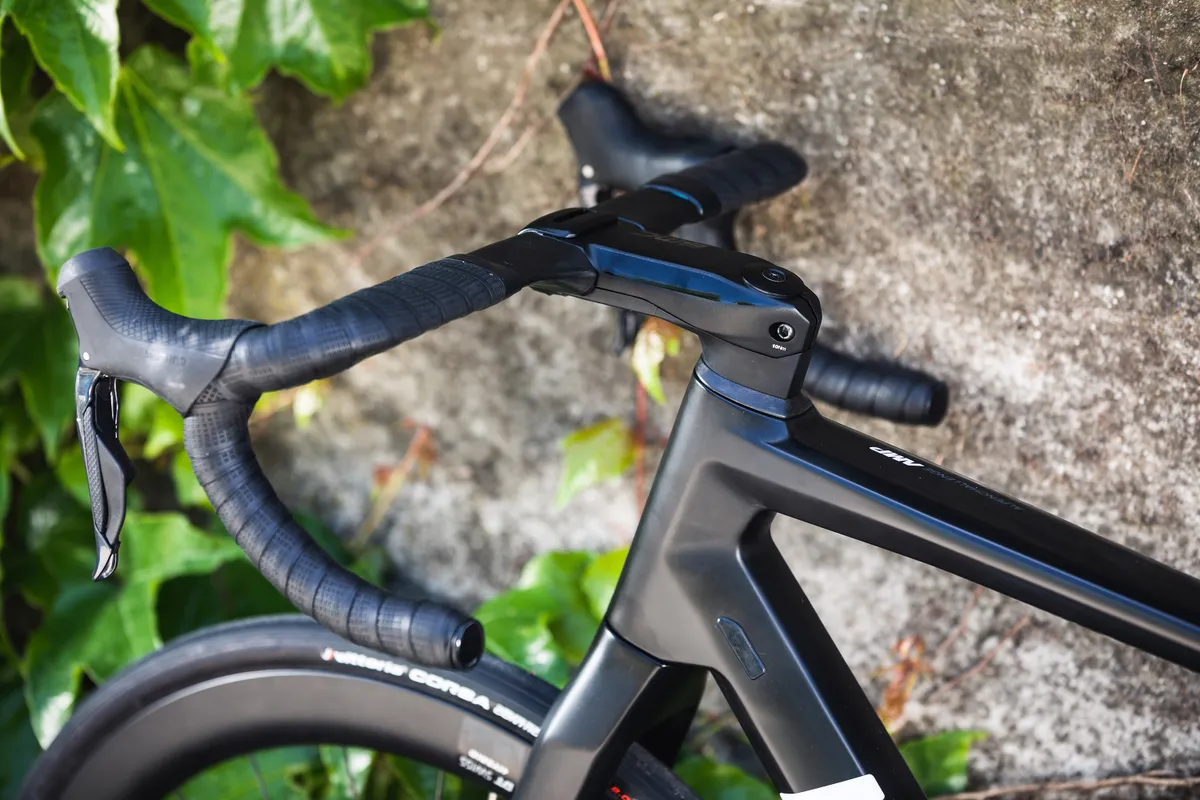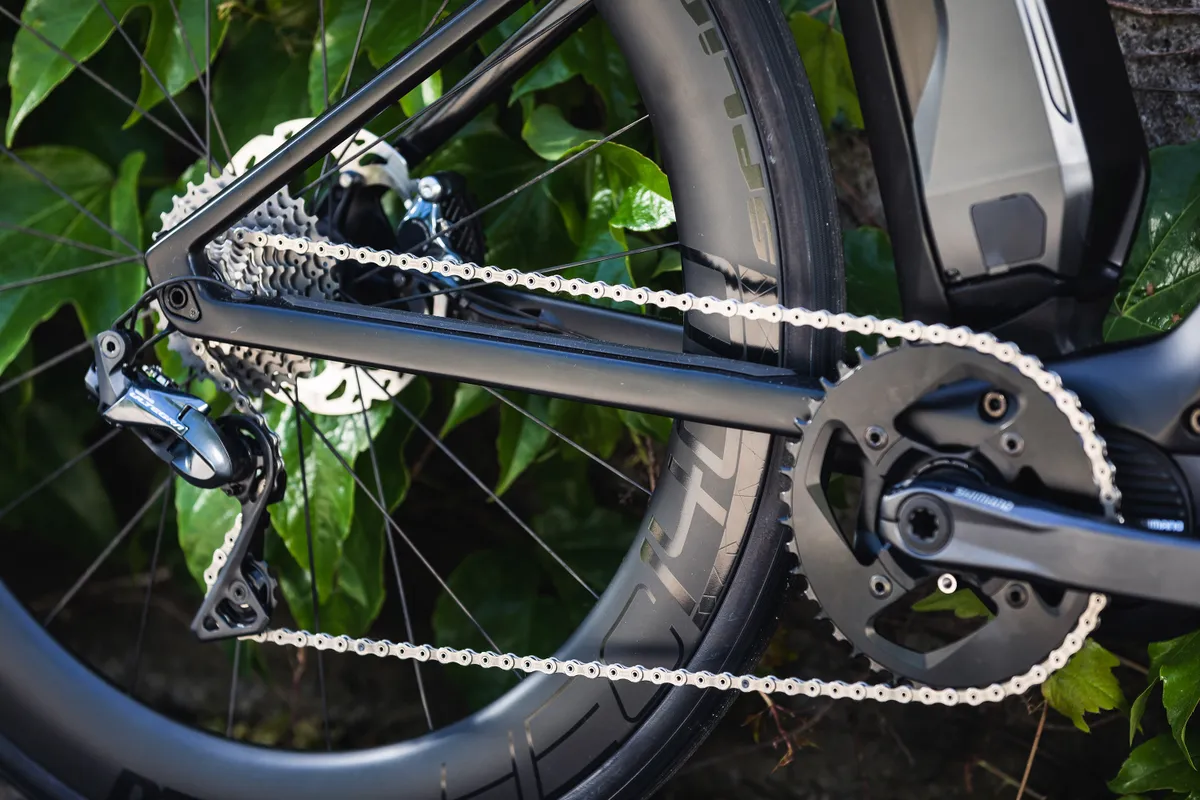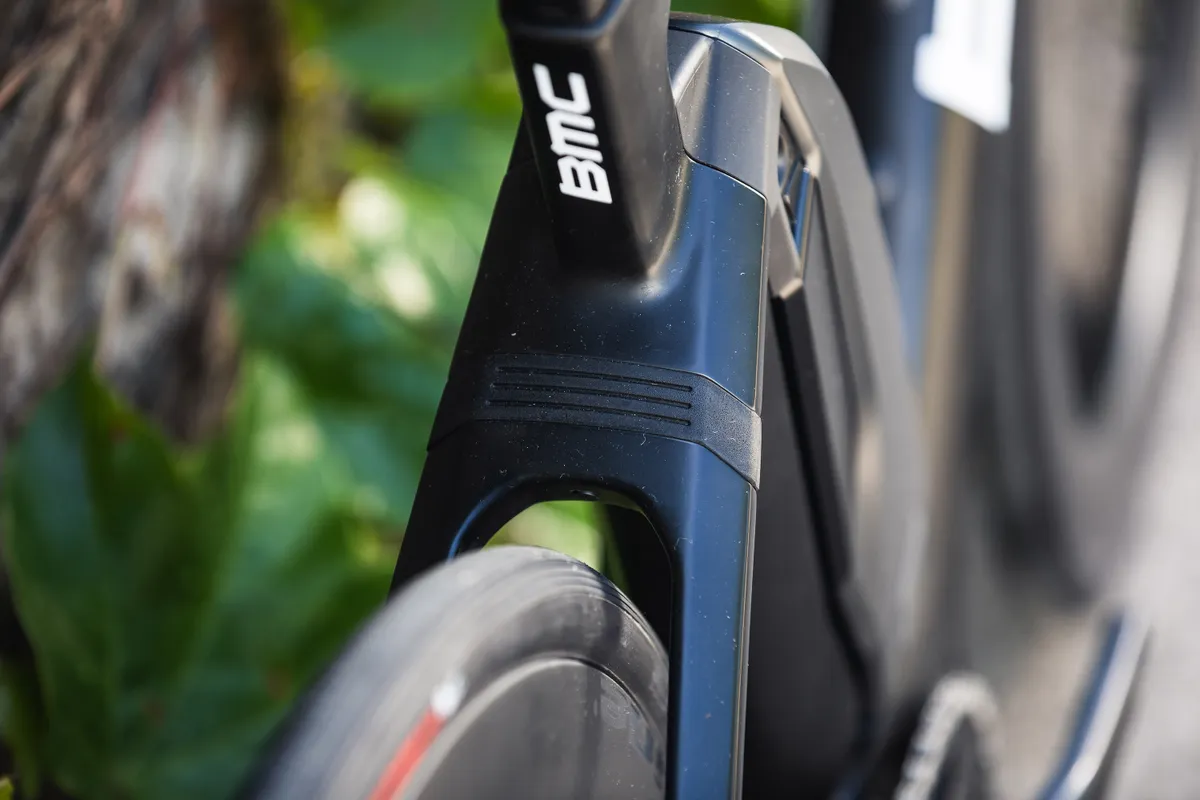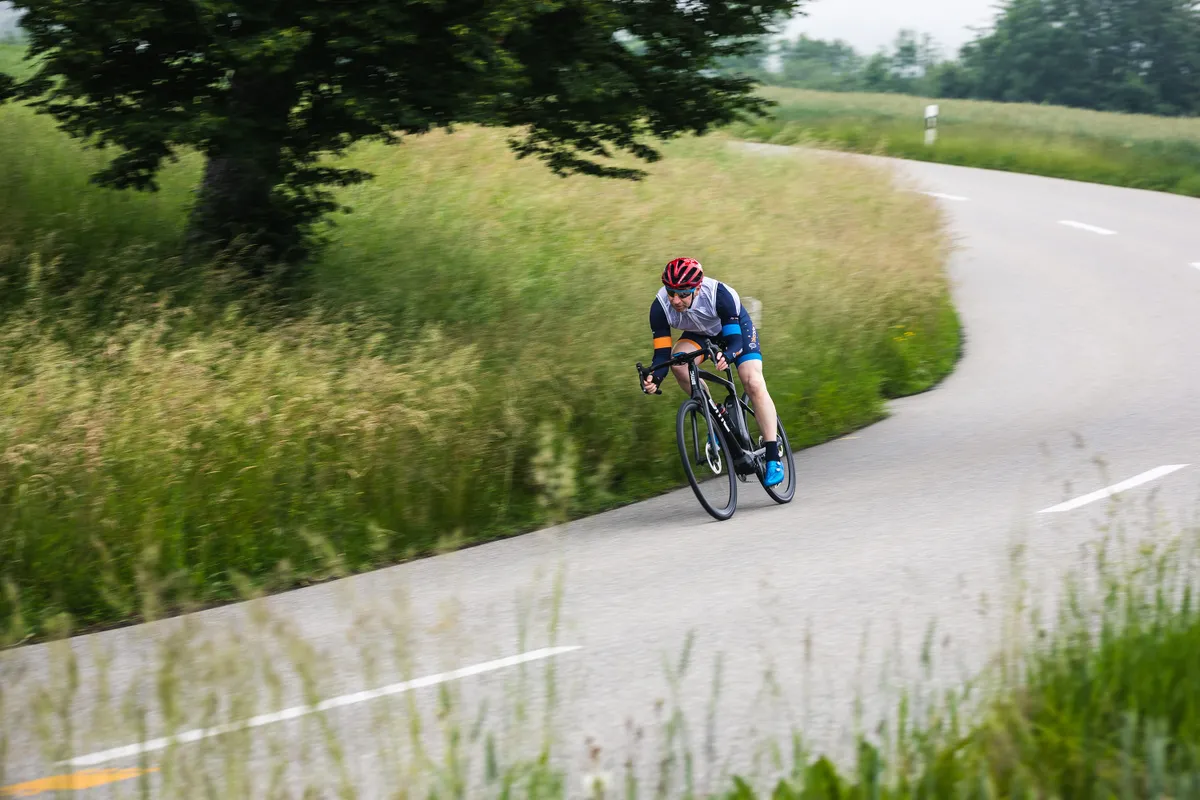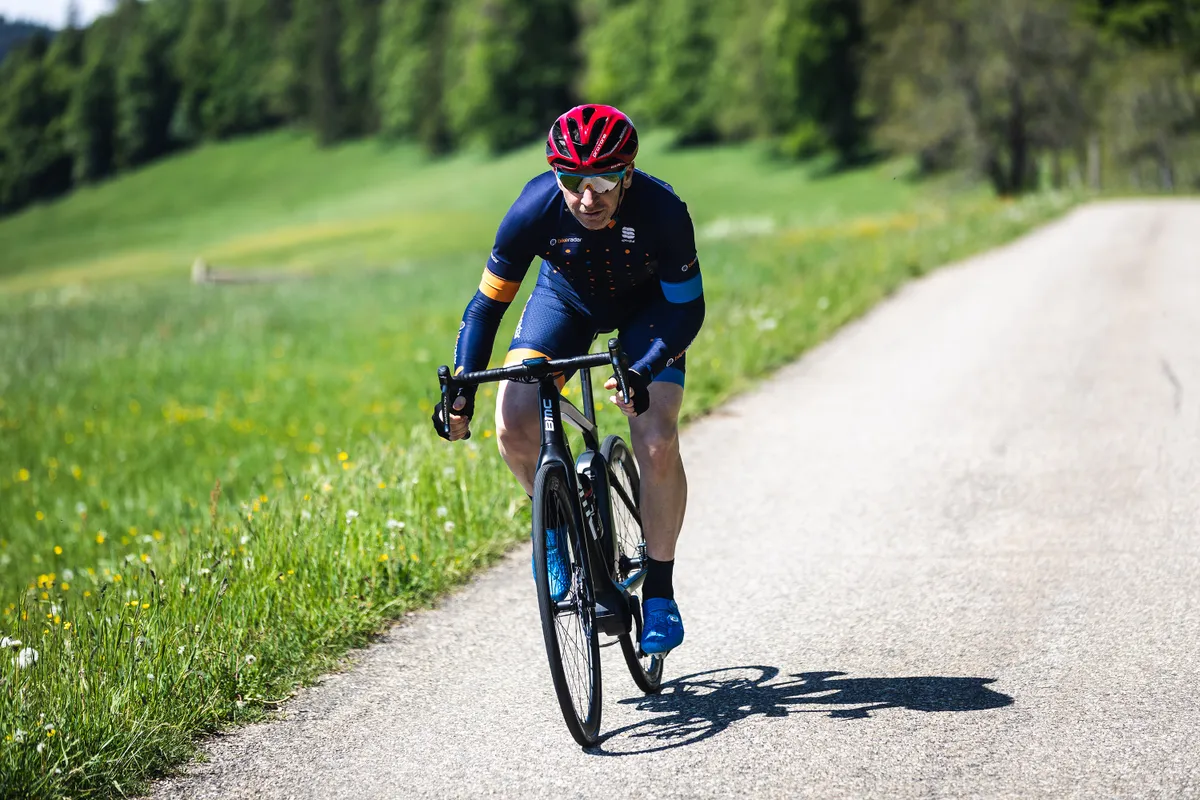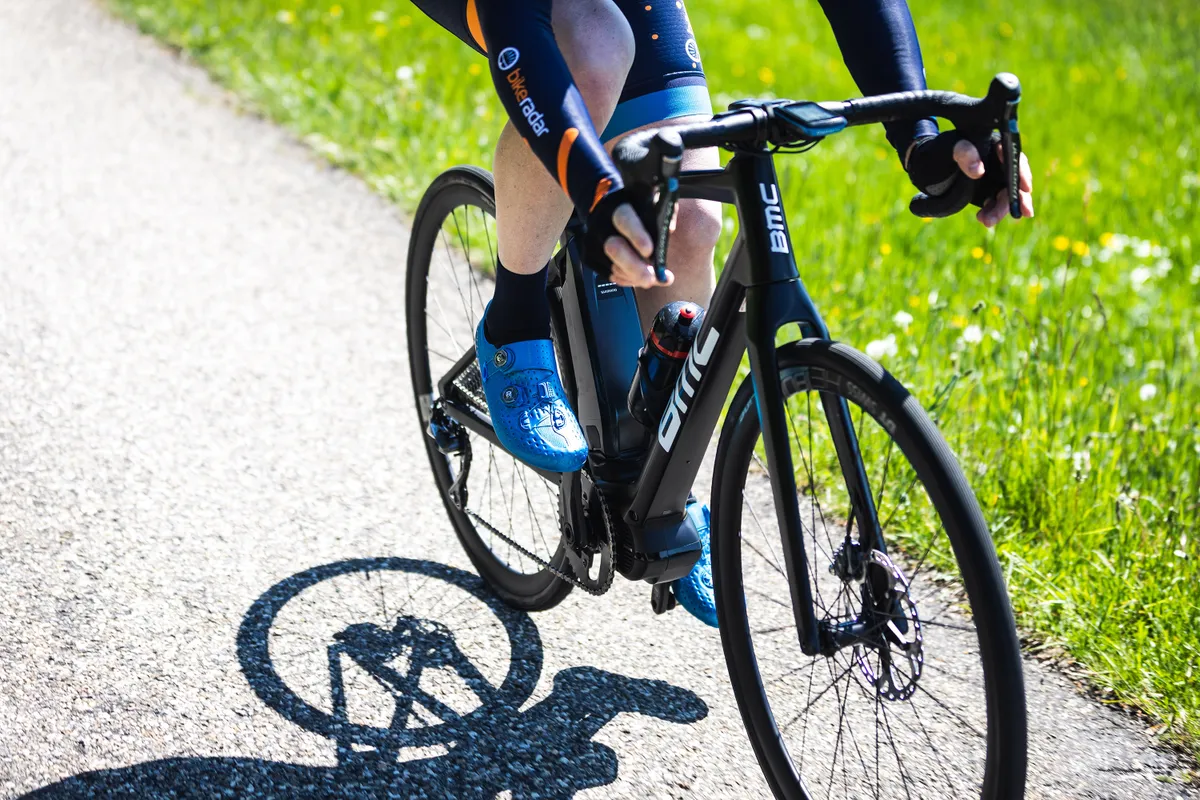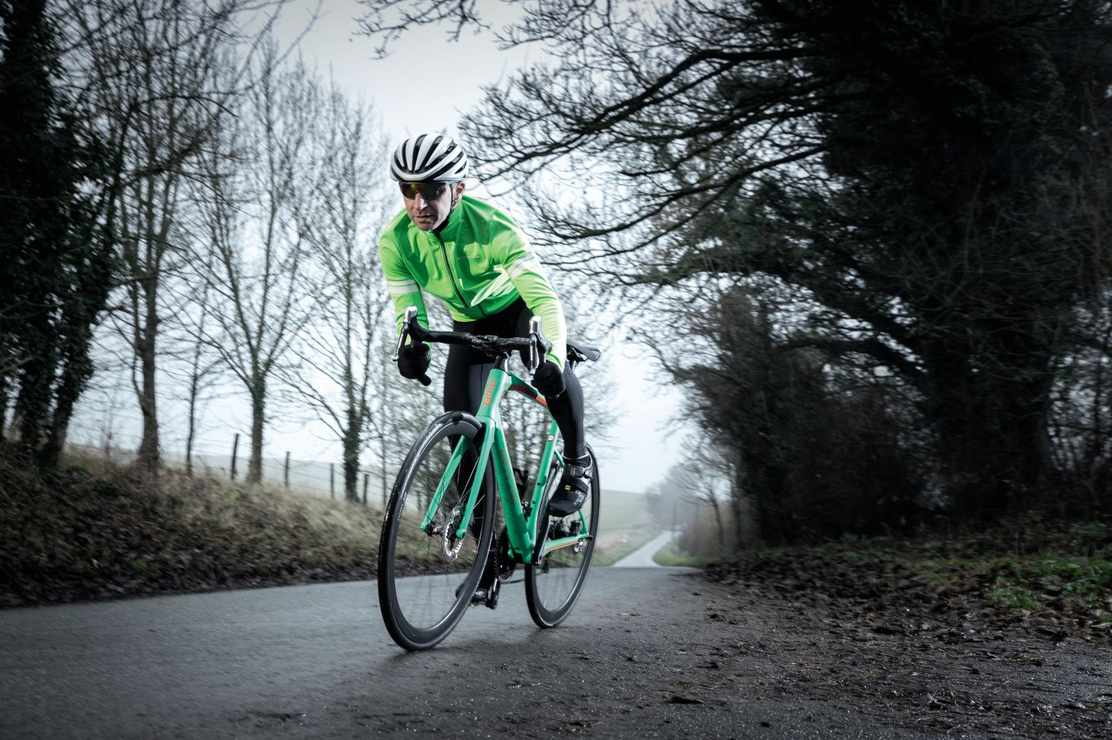BMC’s Alpenchallenge AMP Road electric bike range of three models adds drop bars to the previously flat bar-only Alpenchallenge AMP lineup, plus some necessary component and wheel changes.
The AMP Road shares its carbon frameset with the existing AMP City, Sport and Cross models. Shimano’s STEPS motor and battery still provide the power, with a lower output version on the entry-level machine.
Road e-bikes are still in their infancy, but with new models appearing almost every month, they should be taken seriously. Ever-improving motor and battery technology is defining their aesthetics and dynamic ability, but will road e-bikes ever rival their non-motorised cousins?
The Alpenchallenge AMP Road will sit within BMC’s Lifestyle bike family, a conscious decision that leaves scope for an even higher performing road e-bike at some point in the future, when technology permits.
BMC’s Head of Product, Stefan Christ, says he’d love to be able to create a 10kg road e-bike, which could really expand its usefulness and potential market, but it’s not possible yet.
BMC Alpenchallenge AMP Road ONE first ride impressions
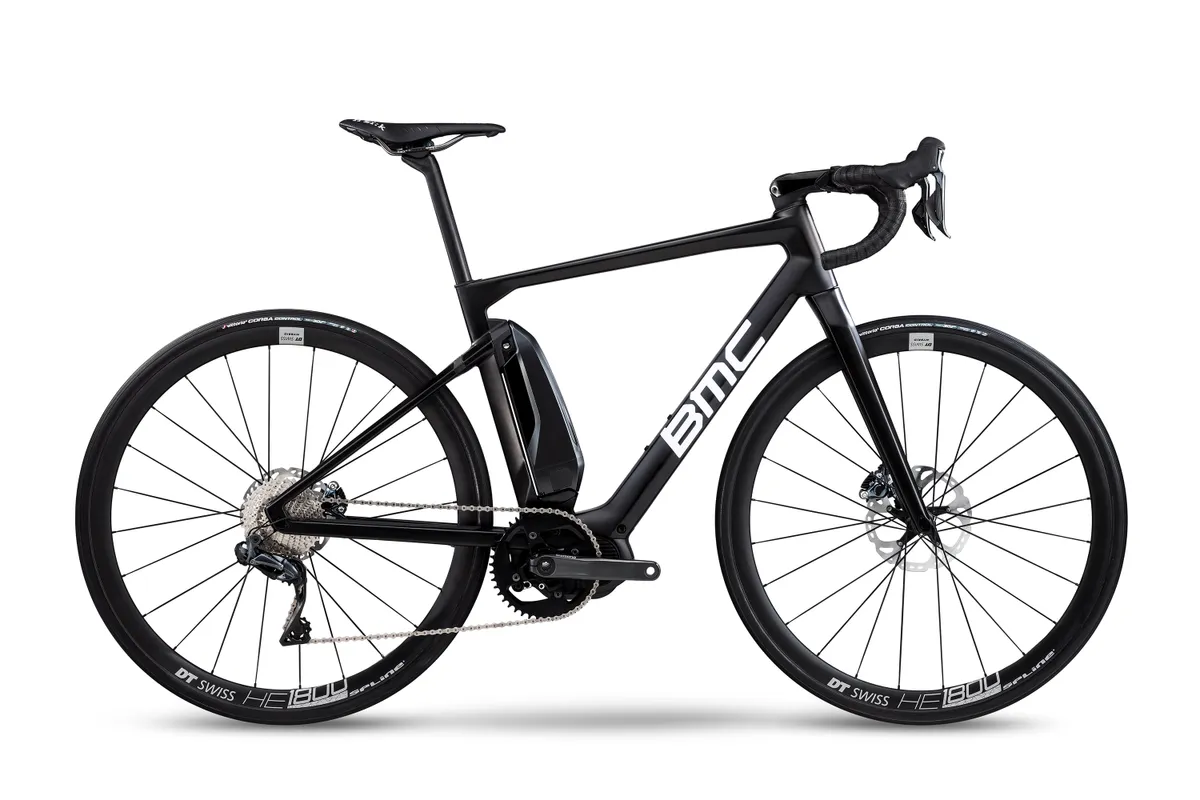
My bike for this ride was the Alpenchallenge AMP Road ONE, which nestles between the range-topping LTD model and the TWO.
It’s the cheapest version with the 70Nm STEPS motor, but saves some cash with the fitting of a round aluminium bar to the ICS stem, and aluminium DT Swiss rims rather than the LTD’s deep carbon hoops.
Bike setup is the same as on any modern BMC, with familiar clamp bolts and easy adjustments. It’s so familiar that it’s easy to forget about the motor and battery, until you try to pick the bike up.
At roughly double the mass of a good road bike, the Alpenchallenge AMP Road’s 15kg weight can’t be ignored when off the bike, but once aboard, it’s a different story.
Our route out of Solothurn, Switzerland was typically urban, with a few starts, stops and awkward junctions. A cobbled street climbed past a grand church and provided an early indication of the Micro Travel Technology's (MTT) vibration-reducing effect, which was more impressive given the sound the bike was making while not skipping lightly across the cobblestones.
Vittoria’s 30mm Corsa Control tyres with 70psi inside measured up to around 32mm on the DT Swiss rims, and helped to further smooth the ride, but with room for 42mm rubber, you could get adventurous.
The front end does a fine job of killing road buzz too, and sucks up larger impacts without jarring your hands on the bar.
Measured efforts
Shimano’s STEPS motor was chosen for the Alpenchallenge AMP range for its impressive power, but also for the tiny amount of drag it generates when pedalling either faster than its 26kmh maximum limit can assist you or with it switched off, compared to rival systems.
Testing this claim in town, I found I could keep the AMP Road spinning along at 32kmh on the flat so easily that I even wondered if the motor was actually helping. It wasn’t. This soon became obvious as we left the urban area and hit the first sustained climb.
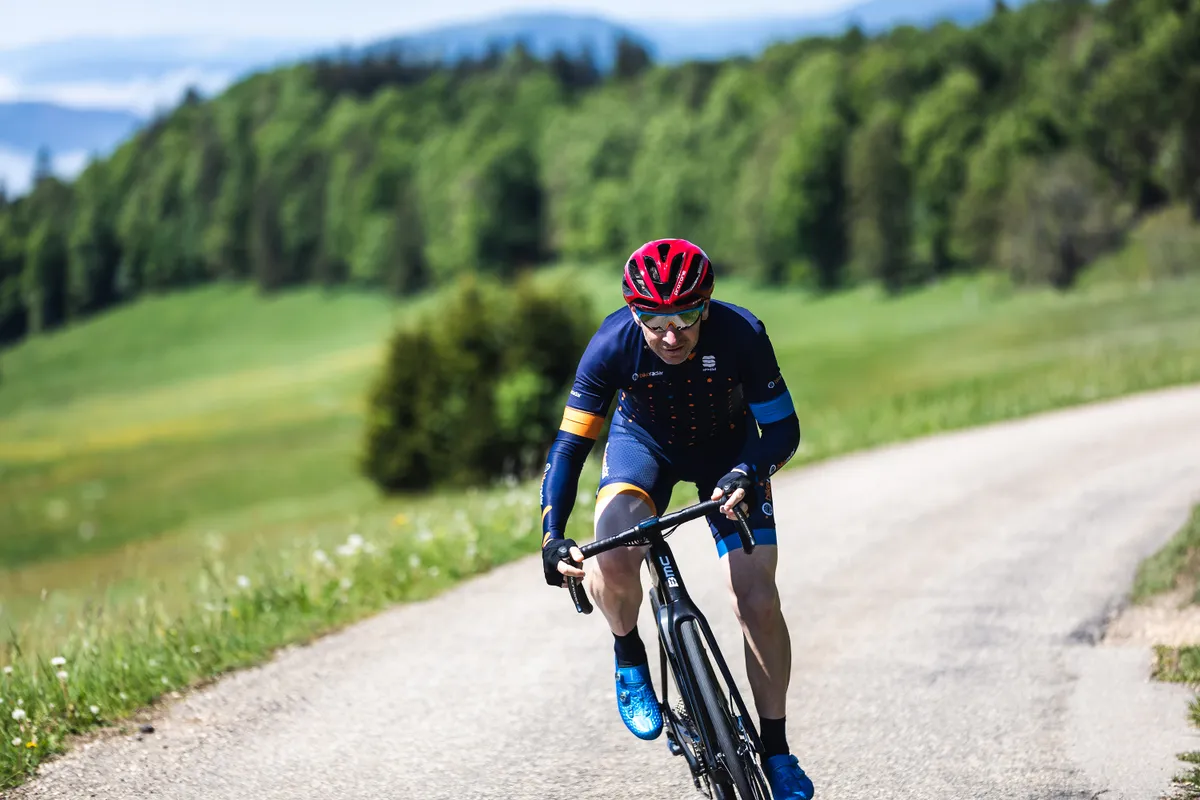
While it’s also possible to climb unassisted on the AMP Road, the effort required soon becomes unsustainable for most riders, and switching the motor on was a relief.
The three modes of Eco, Trail and Boost are partly derived from mountain biking, and the game of dosing your power usage to survive your planned route begins.
Assured that if we started off sensibly in Eco mode there would be ample amps from our amplified Alpenchallenge, I generally saved tinkering with the loud button for later in the ride.
Handling
Gently undulating roads were dispatched without really breaking sweat, although the surprisingly cool air also contributed.
Group riding at close quarters was no more complicated than on any conventional road bike, and then came the first real descent.
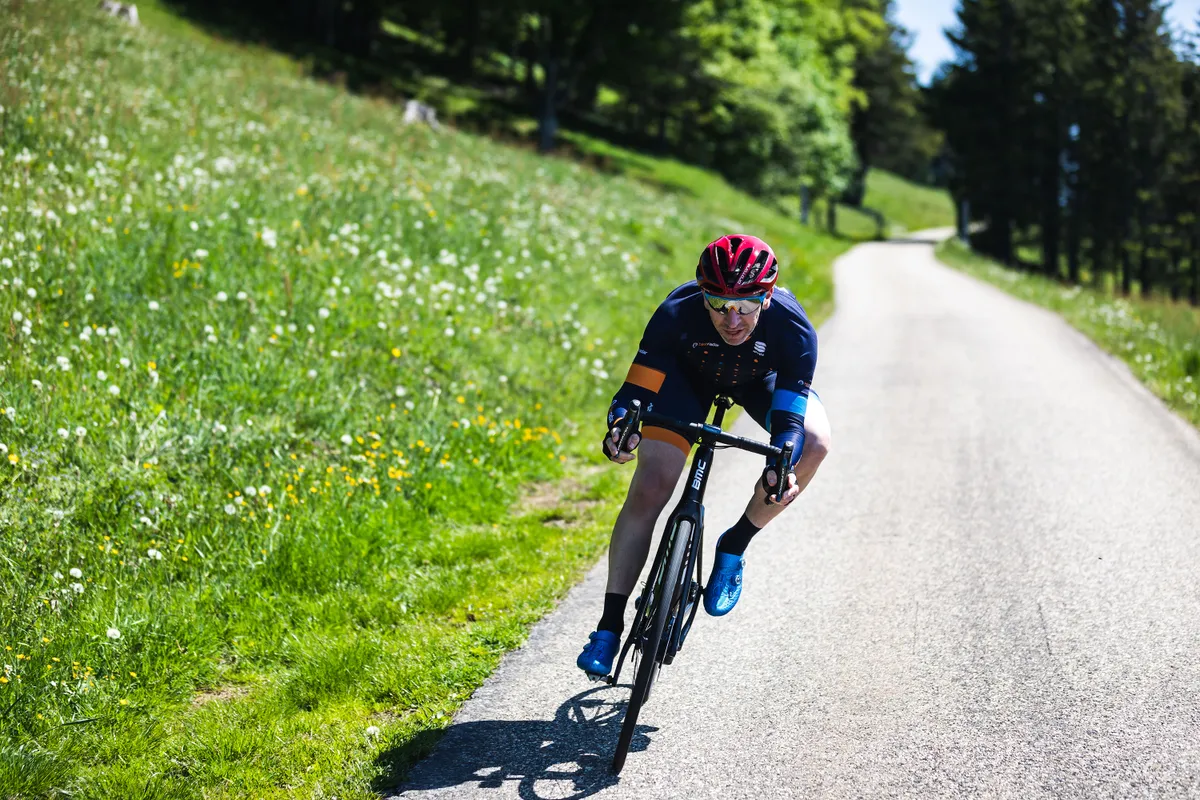
Charging downhill for the first time begged the question of how all that additional mass would alter the bike’s handling. I was confident it would stop, because the 180mm front and 160mm rear disc rotors have immense power and excellent control.
The surprise was how natural the Alpenchallenge AMP Road felt when descending, its central battery placement and motor at the lowest point of the frame really does pay off.
My medium size had a 583mm top tube with 90mm stem, and 72-degree head angle with 65mm trail. Add in a 70mm bottom bracket drop and a 1,053mm wheelbase, and the bike felt totally planted but still very agile at speed.
Last year I descended a 10km steep gravel trail on the Alpenchallenge AMP Cross and was blown away by its precision and superb poise, even when the surface was sketchy.
With the same basic core, the AMP Road shares that composure, and adds the security of drops, plus specifically road-focussed parts. But there’s nothing to stop you fitting some WTB Resolute 42mm tyres, or similar, and pounding some gravel on this bike too.
Climbing
With a 10-mile climb between us and a mountain top rendezvous, it was time to head in to the layer of fog, which regularly blankets the local area’s valleys, keeping things cool below.
In Eco mode, the steeper early part of the climb gave me plenty to do, and I was working just about as hard as I would’ve been on a normal bike, but travelling twice as fast.
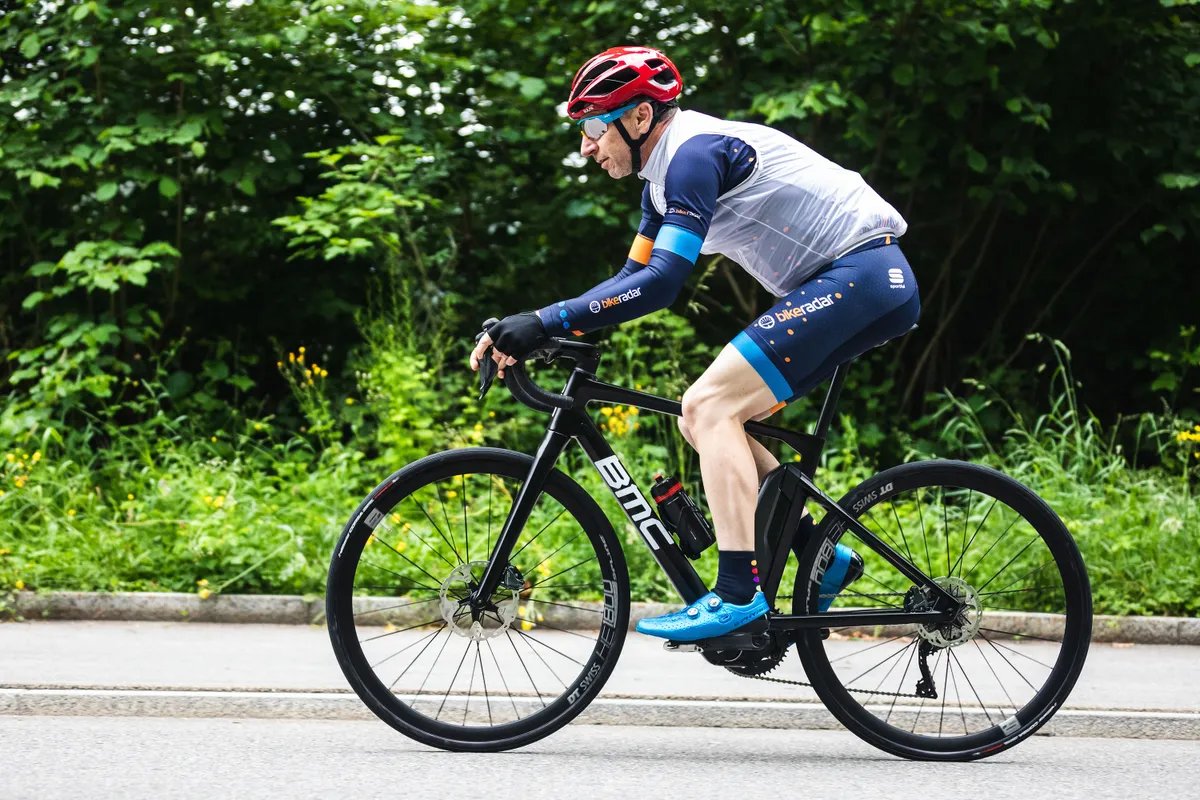
Settling down as the gradient lessened, the challenge was to try and gain the maximum climbing benefit by holding a speed just below the system’s 26kmh assist limit. This is harder than you’d think, because when close to that limit, the motor sometimes hunts a little, caught between powering you uphill or cutting out as your speed rises a little too much.
Using the Shimano bar-mounted display and my Garmin as speed guides may have been part of the problem, because real-time data almost certainly lagged a fraction behind the motor sensors. Whatever the reason, being able to enjoy climbing through the dense fog while chatting and still putting a good effort in was fun.
Elevation
Breaking out of the fog in to bright, warm sunshine meant the summit was near, and with three of my five bars of battery power remaining, it was time to open up the motor.
Selecting Trail increased my speed and reduced the effort required to maintain 26kmh, and occasional Boost blasts out of corners brought me out of the trees to a seemingly endless view of fog-covered valleys.
Some runs up and down the final slopes behind a photographer on the back of a motorbike highlighted one problem with speed-limited road e-bike motors. Sprinting.
Even when sprinting uphill, the 26kmh limit is easily surpassed, and when that happens, the wattage needed to sustain a higher pace doesn’t last long. With a moto driver well aware of this, these runs became an amusing challenge and a pretty good interval session too!
Conversely, during the descending shots, I picked up speed so quickly and had such great confidence in the AMP Road’s stability that the moto was slowing me down.
BMC Alpenchallenge AMP Road early verdict
Even with some hooning around before finally pulling in to our ride’s end, my bike still had 20 percent of its battery power remaining. Over a ride time of 1 hour 21 minutes, I’d ridden 20.4 miles/32.5km, and climbed 3952ft/1,200m at an average of 15mph/24kmh.
I’d like to think I could have replicated those figures on a good road bike without a motor, but I know that in reality, and at my current fitness level, I wouldn’t even get close.
If I had tried, I doubt I’d have enjoyed the afternoon’s ride at all. This is where e-bikes offer something unique, as you, I and anyone else can still ride as hard as we choose, but cover greater distances in less time.
Of course, battery life imposes a limit, but so does physiology, age and terrain. E-bikes may never be for everyone, but if they help more people enjoy cycling, then why not?
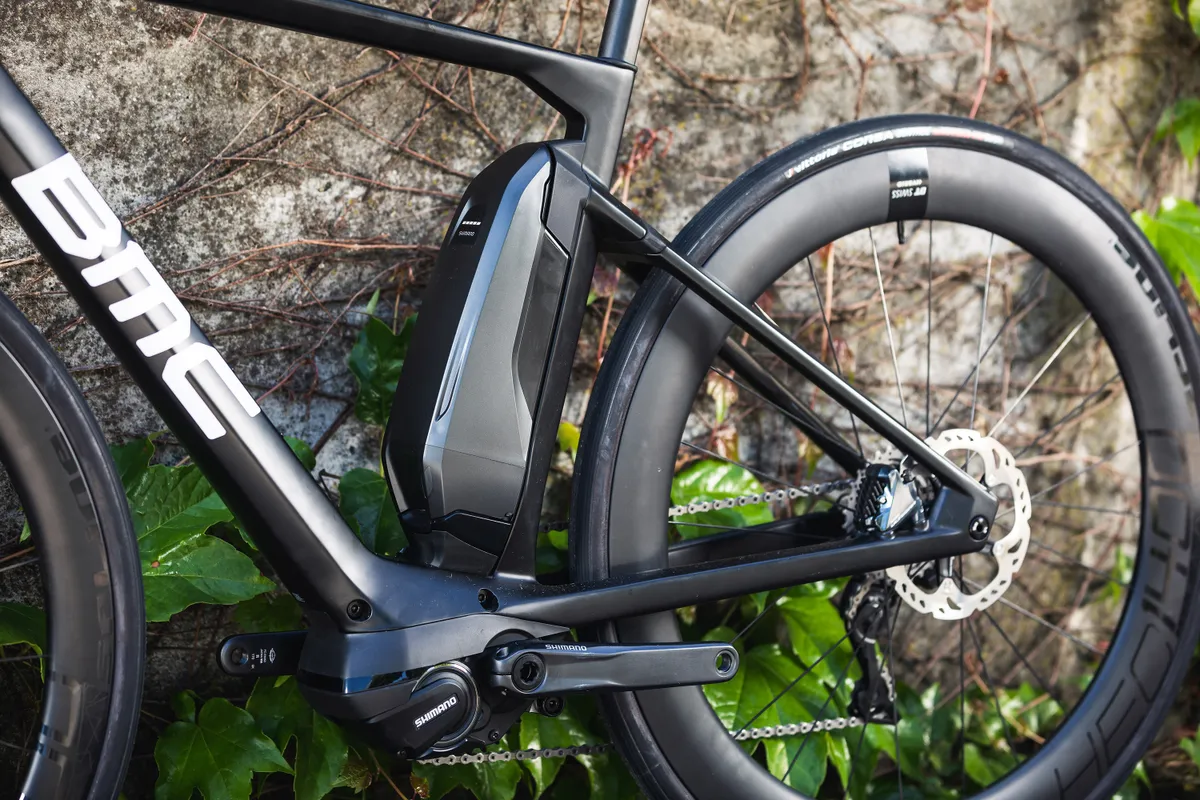
As for the Alpenchallenge AMP Road, it doesn’t hide the fact that it’s an e-bike like some of its competitors do. BMC has favoured dynamic ability, a natural handling feel and increased power and range over the ‘everything internal’ compromise.
It’s such a simple bike to use, its main challenge, as with all e-bikes, is maximising battery life. Its ride quality is more than acceptable for a weighty machine, its handling felt stable but agile at all speeds, and the attention to detail that BMC is renowned for adds class.
Of course, it’s not a cheap option, even in base model guise, but with its tyre clearance and fender versatility, the AMP Road doesn’t need to be constrained by roads at all.
BMC Alpenchallenge AMP Road geometry (M (56-58))
- Rider height: 180-185cm
- Seat angle: 73.5 degrees
- Head angle: 72 degrees
- Chainstay: 43.5cm
- Seat tube: 48cm
- Top tube: 58.3cm
- Head tube: 15.7cm
- Fork length: 41.5cm
- Fork offset: 4.5cm
- Trail: 6.5cm
- Bottom bracket drop: 7cm
- Crank length: 17cm
- Stem length: 9cm
- Stem angle: +/- 8 degrees
- Bar width: 42cm
- Bar drop: 12.5cm
- Bar reach: 7cm
- Seatpost length: 31cm
- Seatpost offset: 1.5cm
- Standover height: 77.7cm
- Wheelbase: 105.3mm
- Stack: 60cm
- Reach: 40.05
- Front centre: 62.8cm
Product
| Brand | Bmc |
Features
| Fork | Alpenchallenge AMP Premium Carbon, Flat Mount, 12x100mm thru-axle |
| Stem | BMC ICS 01 - Integrated Cockpit Design, w/ computer and camera mount |
| Chain | Shimano Ultegra |
| Frame | Alpenchallenge AMP, Micro Travel Technology, Flat Mount, 12x142mm thru-axle, Alpenchallenge Premium Carbon |
| Motor | Shimano STEPS E-8000 250W, 70Nm output |
| Tyres | Vittoria Corsa Control TLR G+, 30mm |
| Brakes | Shimano Ultegra, SM-RT81 Rotors (180/160) |
| Cranks | Shimano CR-E80 spider, FSA Megatooth 44t |
| Saddle | Fizik Antares R3 Kium Large |
| Wheels | DT Swiss HE 1800 Spline db32 Rims and Hubs (thru axle) |
| Shifter | Shimano Ultegra Di2 |
| Cassette | Shimano Ultegra 11-34T |
| Seatpost | Alpenchallenge AMP D-Shape Premium Carbon, 15mm offset |
| Handlebar | BMC RAB02, ergo top shape, compact bend |
| Available sizes | S (51-54), M (56-58), L (61-63) |
| Rear derailleur | Shimano Ultegra Di2 |
| Features | Battery: Shimano STEPS BT-E8010 504Wh |
